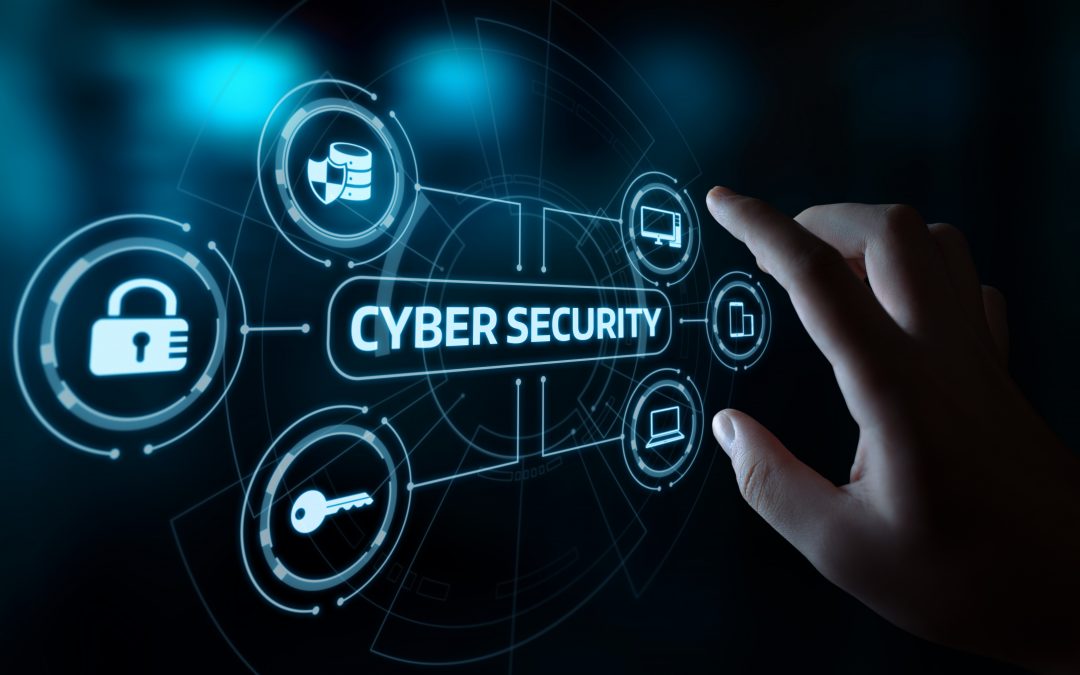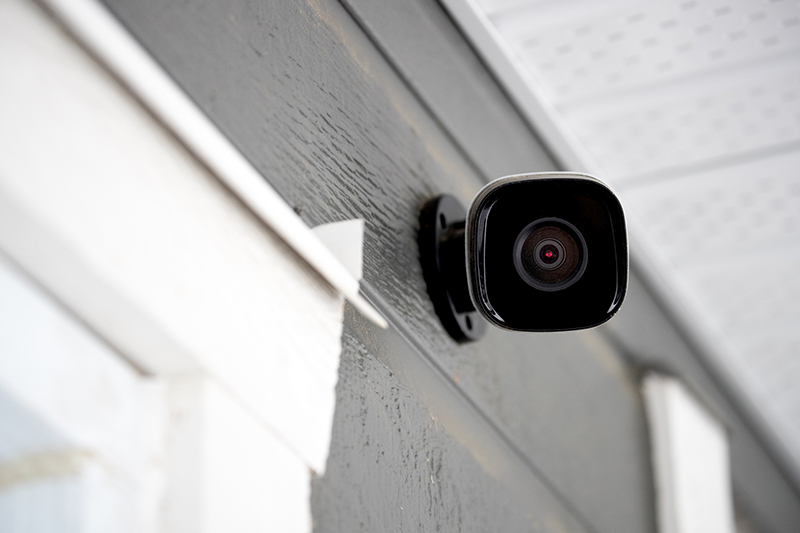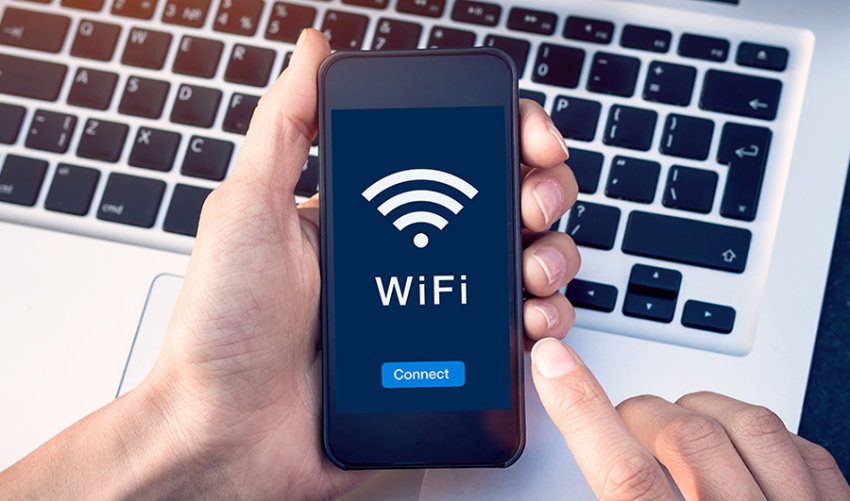Contents
The Importance of Protecting Your Home Network from Cyberattacks
In today’s digital age, we rely heavily on technology in our daily lives. Whether it’s for work, entertainment, or communication, we use devices connected to the internet all the time.
However, with this convenience comes a risk – the risk of becoming a victim of cyberattacks. Cyberattacks can come in various forms – from phishing emails to malware and ransomware attacks.
These threats can cause havoc on your home network and compromise sensitive information such as passwords, personal data and banking details. That is why it is essential to take steps to protect your home network from these threats.
One of the main reasons protecting your home network is so crucial is that it serves as a gateway to all your connected devices such as smartphones, tablets, and laptops. If an attacker gains access to your Wi-Fi network through vulnerabilities or weaknesses in its security settings, they can easily access all those devices.
Just one weak point in your network could lead to disastrous consequences. Moreover, cyberattacks are increasingly becoming more sophisticated and difficult to detect without proper security measures.
While many people assume that only large corporations or government agencies are at risk of being targeted by cybercriminals, this couldn’t be further from the truth. Attacks against individual households are widespread and occur more often than one might think.
Not only do cyberattacks cause direct damage by stealing data or causing financial losses; they also have long-lasting effects on our mental health and well-being. The feeling of helplessness when someone hacks into our personal accounts or steals sensitive information can be overwhelming.
Therefore, learning how to protect your home network should not be taken lightly but rather treated as an essential skill for anyone who uses technology regularly at home. With proper knowledge about cybersecurity best practices and tools available on the market today, you will be better equipped to safeguard yourself against potential threats and enjoy peace of mind knowing that you’ve taken the necessary steps to protect your family’s privacy and security.
Understanding Cyberattacks
In today’s digital age, cyberattacks have become increasingly common and can pose a serious threat to the security of your home network. It’s important to understand the different types of cyberattacks that exist so you can take steps to protect yourself.
One type of cyberattack is phishing. This involves the use of fraudulent emails or websites to trick you into giving away sensitive information such as passwords, credit card numbers, or social security numbers.
Phishing attacks often appear to be from legitimate sources like banks, social media accounts, or other trusted organizations. Another type of cyberattack is malware which is any malicious software designed to harm your computer system or network.
Malware can come in different forms including viruses, worms, and Trojan horses. They often spread through email attachments or downloads from untrusted websites.
Ransomware is yet another type of cyberattack that has become increasingly common in recent years. This involves hackers taking control of your computer and demanding payment in exchange for restoring access to your files or system.
Recent High-Profile Cyberattacks on Home Networks
In recent years there have been many high-profile cyberattacks on home networks around the world. One such example was the 2017 WannaCry ransomware attack which affected hundreds of thousands of computers globally. The attack exploited a vulnerability in Microsoft Windows and caused widespread damage and financial loss for individuals and companies alike.
Another notable incident was the 2018 Mirai botnet attack which targeted smart devices like routers and cameras connected to home networks. The botnet was able to take control over these devices and use them as part of a larger distributed Denial-of-Service (DDoS) attack against various targets around the world.
In 2020 there was an increase in phishing attacks related to COVID-19 with scammers posing as health officials or government agencies requesting personal information about symptoms or test results. These attacks targeted vulnerable individuals who were already worried about the pandemic and seeking information.
It’s clear that cyberattacks are a serious threat to the security of home networks. By understanding the different types of attacks and recent examples, you can take steps to protect yourself and your family from potential harm or financial loss.
Securing Your Home Network
Tips for Securing Your Wi-Fi Network
Your Wi-Fi network is the gateway to your home network, and securing it is the first line of defense against cyberattacks. Start by setting a strong and unique password for your Wi-Fi network.
Avoid using default passwords that come with the router as these are easily guessable by hackers. Instead, use a combination of upper and lowercase letters, numbers, and symbols.
Another important step to securing your Wi-Fi network is to enable encryption. The most common encryption protocol used in modern routers is WPA2 (Wi-Fi Protected Access II).
This provides strong protection against unauthorized access to your wireless network. Disable Wi-Fi Protected Setup (WPS) on your router.
Although this feature makes it easy for guests to connect to your Wi-Fi network, it also makes it easier for hackers to gain access. Therefore, disabling WPS will add an extra layer of security.
Updating Firmware and Software Regularly
Firmware is essential software that runs on hardware devices such as routers and modems. These devices require updates just like any other software on our computers or mobile devices. These updates patch vulnerabilities that can be exploited by hackers.
To update firmware on a router or modem, check the manufacturer’s website for instructions on how to do so. Generally speaking, you can update firmware through the device’s web interface by accessing it through a web browser on a computer connected to the same network as the device.
In addition to updating firmware, regular updates of operating systems and software are important steps in securing your home network. Be sure that all devices connected to your home network receive regular security patches from their respective manufacturers.
Installing Antivirus and Anti-Malware Software
Anti-virus and anti-malware software are essential components of any comprehensive home network security plan. These software programs scan your devices for malicious software and viruses that could compromise your home network.
There are a variety of antivirus and anti-malware software solutions available on the market today, both paid and free. Some popular options include Norton, McAfee, Avast, and Malwarebytes.
It’s essential to keep these programs updated regularly so that they can detect new types of malware as they emerge. Schedule regular scans to ensure that your devices are clean of any malicious software.
Securing your home network is crucial in protecting against cyberattacks. By following these tips for securing your Wi-Fi network, updating firmware and software regularly, and installing antivirus and anti-malware software, you will significantly reduce the risk of cyberattacks on your home network.
Protecting Your Devices
Best Practices for Securing Individual Devices (Strong Passwords, Two-Factor Authentication)
When it comes to protecting your home network from cyberattacks, securing individual devices is just as important as securing the network as a whole. One of the most important steps you can take in this regard is to use strong passwords for all of your devices.
A strong password should be at least 12 characters long and include a mix of uppercase and lowercase letters, numbers, and symbols. It’s also recommended that you don’t use the same password for multiple accounts.
Another great way to protect your devices is to enable two-factor authentication (2FA) wherever possible. 2FA adds an extra layer of security by requiring you to provide two forms of identification before accessing an account or device.
This could be something you know (e.g., a password) and something you have (e.g., a code sent via text message or generated by an app). By requiring both types of identification, 2FA makes it much harder for hackers to gain access to your devices.
Keeping Devices Updated with the Latest Security Patches
Even if you’ve taken steps to secure your home network and individual devices, there’s always the risk that new vulnerabilities will be discovered in software or firmware. Fortunately, many companies release security patches when vulnerabilities are found.
These patches often address critical flaws that could allow hackers to gain control of your device or steal sensitive data. To keep your devices protected against known vulnerabilities, it’s important to keep them updated with the latest security patches.
This means regularly checking for updates and installing them as soon as they become available. Many devices allow you to set up automatic updates so that you don’t have to remember to check for updates manually.
It’s worth noting that some older devices may no longer receive updates from their manufacturers. If this is the case for one of your devices, it may be time to consider upgrading to a newer model that will receive regular updates and remain more secure over time.
Conclusion
By following these best practices for securing individual devices, you can significantly reduce the risk of cyberattacks on your home network. Use strong passwords and enable two-factor authentication wherever possible to add an extra layer of security.
And don’t forget to keep your devices updated with the latest security patches to protect against known vulnerabilities. With these steps in place, you’ll be well on your way to safeguarding your home network against cyber threats.
Safe Online Behavior
Educating Family Members
When it comes to protecting your home network from cyberattacks, education is key. One of the best ways to prevent security breaches is by teaching your family members safe online behavior. This includes not clicking on suspicious links or downloading unknown files.
Hackers often use phishing emails and fake websites to trick people into giving away their personal information, so it’s important to be cautious and verify the legitimacy of any requests before sharing sensitive information. It’s also important to teach your family members about the dangers of oversharing on social media.
Posting too much personal information can make you more vulnerable to cyberattacks and identity theft. Encourage everyone in your household to think twice before sharing any personal details online.
Using a Virtual Private Network (VPN)
Another way to protect your home network from cyberattacks is by using a virtual private network (VPN) when accessing public Wi-Fi networks. Public Wi-Fi networks, such as those found at coffee shops, airports, and hotels, are often unsecured and can leave you vulnerable to hackers.
A VPN creates an encrypted connection between your device and the internet, making it difficult for anyone else on the same network to see what you’re doing or steal your data. There are many VPN services available, both free and paid, so do some research and choose one that fits your needs.
Keep in mind that while a VPN can help protect you while using public Wi-Fi networks, it may not be necessary when using your own secure home network. However, if you frequently work remotely or travel often, investing in a VPN could provide an extra layer of protection for both yourself and your family members.
Cybersecurity Habits For Kids
Teaching kids about cybersecurity habits early on can help them develop good habits that will stick with them throughout their lives. One of the best ways to start is by talking to them about why it’s important to be safe online.
Explain that just like they wear a helmet when they ride their bike, being safe online helps protect them from harm. Encourage your kids not to share personal information online or with strangers, and to always ask for permission before downloading anything.
Teach them how to create strong passwords and the importance of keeping those passwords safe. You can also use parental controls and filters on devices and apps to limit exposure to inappropriate content.
Make cybersecurity a family affair. Create rules together about what is and isn’t allowed online, and discuss any incidents of cyberbullying or other negative experiences your child might have had while using the internet.
Using Two-Factor Authentication
Two-factor authentication adds an extra layer of security to your accounts by requiring a second form of verification in addition to your password. This can include entering a code sent via text message or using a biometric identifier such as a fingerprint.
Many popular platforms, including Google, Facebook, Twitter, and Apple now offer two-factor authentication as an option for users. Encourage your family members (and especially younger children) to enable two-factor authentication on their accounts whenever possible in order to add an additional layer of security against cyberattacks.
The Importance Of Password Security
Passwords are one of the first lines of defense against cyberattacks on home networks. However, many people still use weak passwords that are easy for hackers to guess. Encourage everyone in your household (including young children) to use strong passwords with at least 8 characters that include letters (both upper- and lower-case), numbers, and symbols.
Avoid using obvious information such as birthdays or names. Consider using phrases instead.
Teach them NOT TO REUSE PASSWORDS Use proven password management tools
Monitoring Your Network Activity
Stay One Step Ahead of the Hackers
When it comes to protecting your home network from cyberattacks, monitoring your network activity is an essential step. By keeping an eye on what’s going on in your network, you’ll be able to detect any suspicious activity and stop it before it causes serious damage. One way to monitor your network activity is by setting up alerts for unusual activity.
Many routers and security tools have this feature built-in, allowing you to receive notifications when something out of the ordinary happens on your network. This could include attempts to access restricted areas or changes made to security settings.
Another important aspect of monitoring your network activity is regularly reviewing logs and reports from your router and other security tools. These logs can provide valuable insights into the traffic on your network, including who’s accessing it, what they’re doing, and which devices are most vulnerable.
By analyzing these logs regularly, you’ll be able to identify potential threats early on and take proactive measures to protect yourself. For example, if you notice that a particular device is generating a lot of traffic or communicating with suspicious sites, you can investigate further and take action if necessary.
Setting Up Alerts for Unusual Activity
Setting up alerts for unusual activity is relatively simple with most modern routers and security tools. Typically, all you need to do is log into the device’s web interface (using a username/password) and navigate to the alerts or notifications section. From there, you can choose which types of events should trigger an alert – such as failed login attempts or changes made to firewall rules – as well as how those alerts should be delivered (e.g., email or SMS).
It’s important not to go overboard with alerts though – too many notifications can quickly become overwhelming and lead to alert fatigue. Instead, focus on setting up alerts that are most relevant to your particular network and security needs.
Regularly Reviewing Logs and Reports
While setting up alerts can help you stay on top of potential threats, it’s also important to regularly review logs and reports from your router and other security tools. These logs can provide a wealth of information about the devices on your network, as well as the traffic that’s flowing through them.
By reviewing these logs regularly, you’ll be able to identify patterns or anomalies that could indicate a compromise. For example, if you notice that a particular device is connecting to an unusual number of external IPs or generating a significant amount of outbound traffic at odd hours, this could be cause for concern.
By reviewing logs regularly, you’ll also be better equipped to detect when something goes wrong and take immediate action. For instance, if you notice that a device has suddenly stopped communicating with other devices on your network or is generating an unusually high amount of traffic, this could be a sign of malware or other malicious activity.
Conclusion
Protecting your home network from cyberattacks may seem like a daunting task, but it is crucial in today’s digital age. It only takes one successful attack to compromise your personal and financial information. By following the tips outlined in this article, you can significantly decrease the risk of a cyberattack on your home network. Key Takeaways:
- Understand the different types of cyberattacks and how they work.
- Secure your Wi-Fi network with strong passwords, encryption, and by disabling WPS.
- Keep your devices and software up to date with the latest security patches.
- Educate yourself and family members about safe online behavior.
- Monitor your network activity for unusual activity or suspicious behavior.
It is essential to prioritize home network security as we become increasingly reliant on technology. Cyberattacks are becoming more sophisticated and prevalent. However, there are simple steps you can take to protect yourself, and it starts with being proactive.
If you are feeling overwhelmed or unsure where to start, consider consulting with a cybersecurity professional or seeking additional resources online. Remember that protecting your digital life is an ongoing process that requires continuous attention and effort.
By taking the necessary precautions, you can enjoy the benefits of technology without compromising your privacy or security. Don’t let cybercriminals have access to your personal data; take action now to secure your home network!











